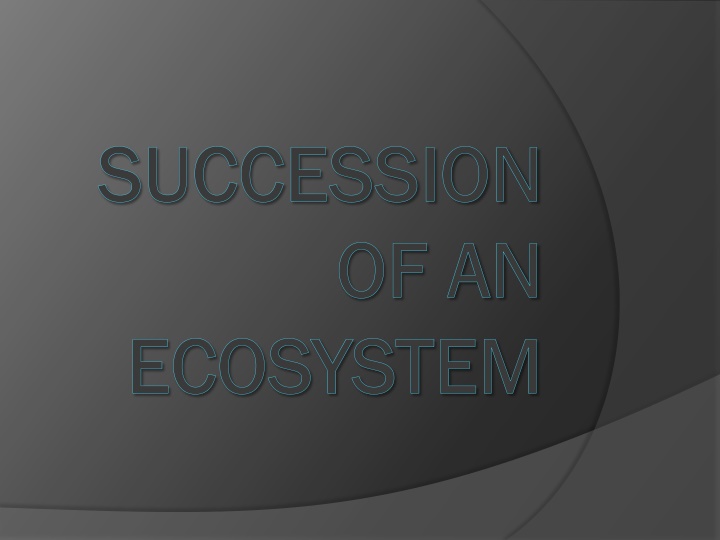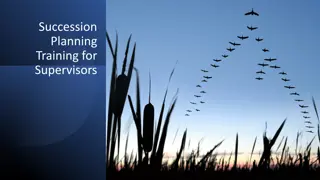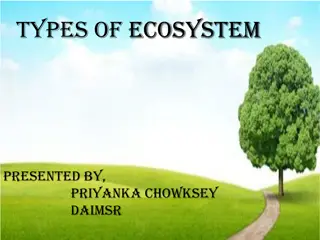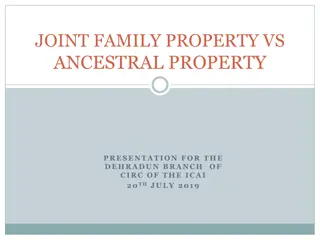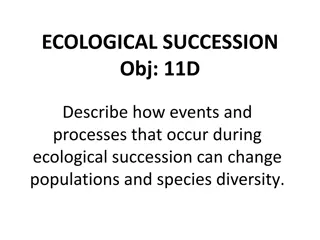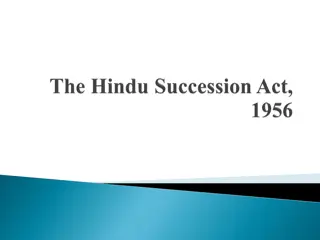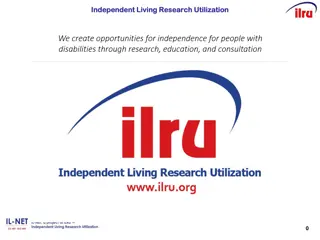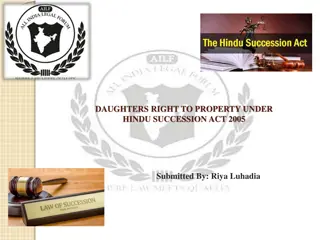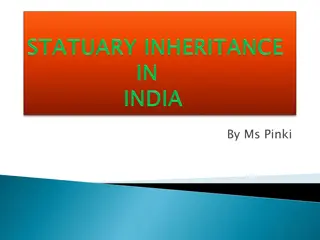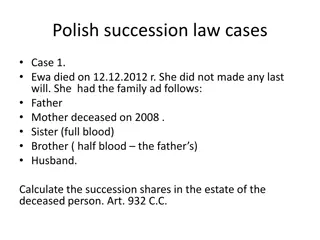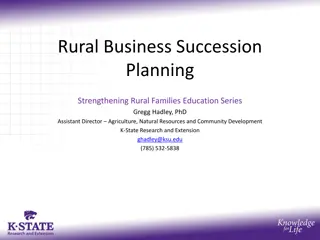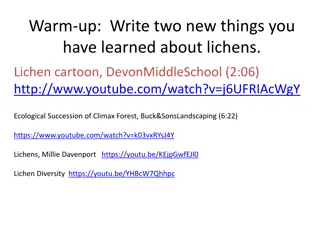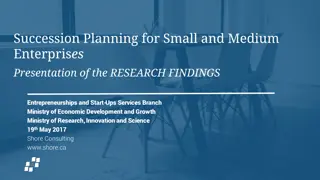Ecosystem Succession
Ecosystem succession involves the changing of species composition over time, with two main types - primary and secondary succession. Primary succession starts from barren landscapes, while secondary succession occurs on existing soil. The process goes through stages known as seral stages, leading to the establishment of diverse ecosystems. Different types of primary succession communities and stages are discussed, highlighting the progression from pioneer species to climax communities.
Download Presentation

Please find below an Image/Link to download the presentation.
The content on the website is provided AS IS for your information and personal use only. It may not be sold, licensed, or shared on other websites without obtaining consent from the author.If you encounter any issues during the download, it is possible that the publisher has removed the file from their server.
You are allowed to download the files provided on this website for personal or commercial use, subject to the condition that they are used lawfully. All files are the property of their respective owners.
The content on the website is provided AS IS for your information and personal use only. It may not be sold, licensed, or shared on other websites without obtaining consent from the author.
E N D
Presentation Transcript
SUCCESSION SUCCESSION OF AN OF AN ECOSYSTEM ECOSYSTEM
Succession Succession Where the changing of species composition occurs over a period of time. Two main types: Primary succession: starting from scratch. Where there is no living organisms, and soil formation is starting. Secondary succession: starting over. Where there is soil and previous organisms that will be brought by wind, or lay dormant until conditions are right to start growing again.
Primary succession Primary succession Primary succession (Prisere): It starts with a lifeless abiotic area. Soil being deposited and the colonization of organisms slowly appearing. Succession goes through stages called seral stages. A sere is a set of communities that succeed one after the other. i.e.: Lithosere bare rock to woodland community. Hydrosere build up of vegetation in a lake/pond turning into a forest. Plagiosere human activity stops a natural succession from occurring into climax or subclimax community.
Primary Succession Primary Succession Types of Primary succession communities: New volcanic land Retreat of a glacier Build up of vegetation from a deep pond or lake. Stages of succession: Bare/inorganic surface lifeless abiotic environment, ready for soil deposits to form from wind sediment and erosion. Seral 1 (colonization) first species to colonize (pioneer species) usually small in size, short life cycles, rapid growth and maturity with many offspring. Seral 2 (establishment) Species diversity begins. New species move in either to prey or colonize. Invertebrates appear in soil. Humus (organic matter) increases in amount.
Primary Succession Primary Succession Seral 3 (competition) climate continues to change with addition of new species. Larger plants appear and increase cover and shelter are provided for newer and more diverse species to inhabit area. Less temperature extremes. Seral 4 (Stabilization) fewer new species, colonizers are established or slowing fading out of the area. More complex food webs are seen and more specialized niches are found. Larger less productive organism are establishing. Seral 5 (Climax) Final stage. Climax community. The area is stable and has reached a dynamic equilibrium.
Primary Succession Primary Succession Pioneer communities: Consists of a group of species that are rapidly growing/reproducing. Well adapted to extreme climates Examples: Microorganisms (bacteria, phytoplankton), mosses, lichen, insects
Secondary Succession Secondary Succession Gradual replacement of one community of organisms by another in a slow predictable manner in an area where life has already started. Causes of: Catastrophic event major earth/natural event that has caused disruption in the natural succession of the environment. Ex: forest fire, flood, hurricane, tornado, rock/mud slide.
Succession of a Water Source Hydroseres: o In primary succession: o Only bacteria, phytoplankton or simple organisms move in and live. Pioneer species o Organic material settles to the bottom of a river, lake, pond etc. o Buildup of these organic materials along with deposited seeds from birds and wind cause plants, algae, grasses and reeds to grow at the edges or bottom of the water source. A marsh is formed o As the plant bases and animal species move in more and larger organisms move in such as trees and shrubs, fish, turtles, amphibians, insects. o Then the sediment will build up and the marsh becomes a bog where soil and plants take over the top layer of the water and sediments build up from the bottom.
Succession of a Water Source Secondary Succession: When a disaster such as pollution, flooding, hurricanes etc, change a water source the changes to find equilibrium are considered secondary. The organisms either die or move out from the disaster Then simple plant and animal species will readapt and grow Once pioneer species move back in and sediments are reestablished then larger organisms will move in.
